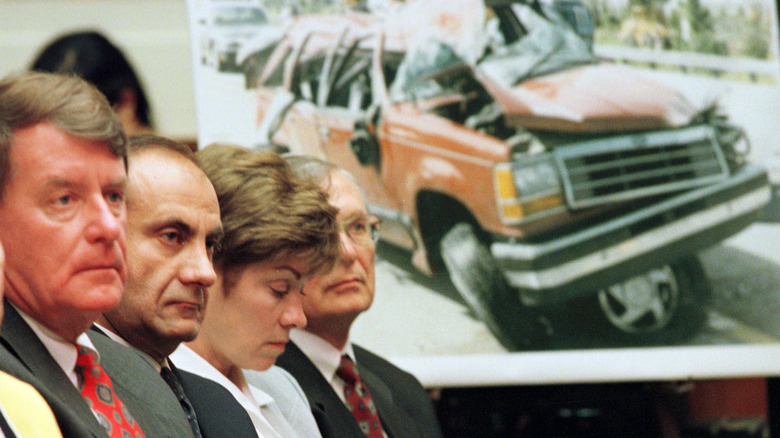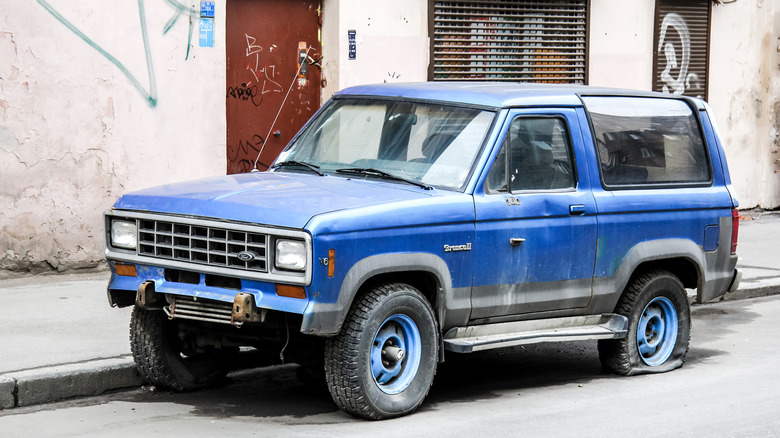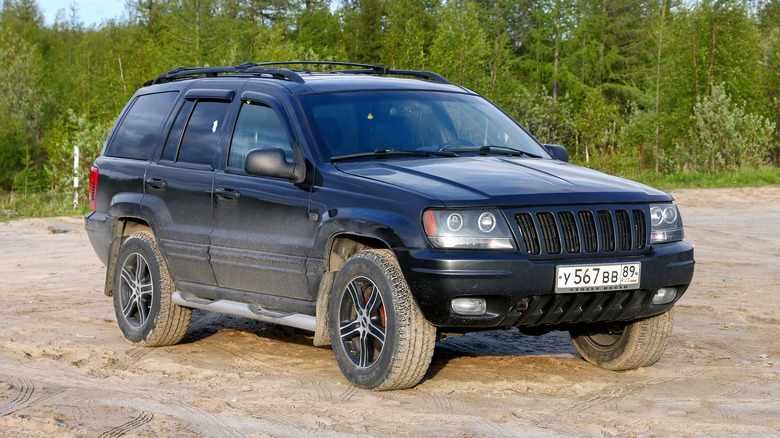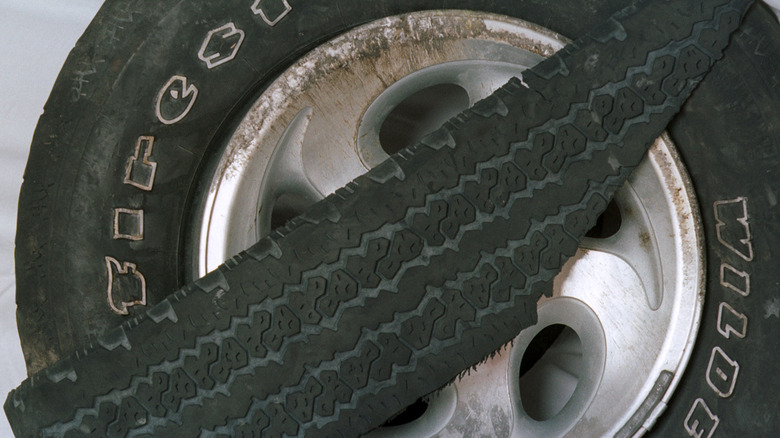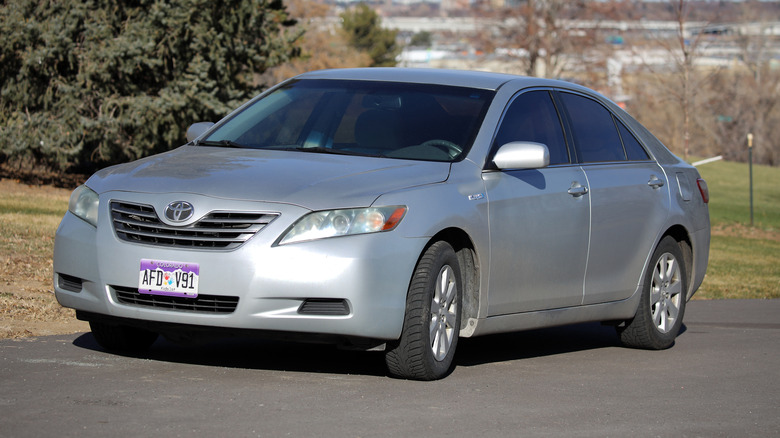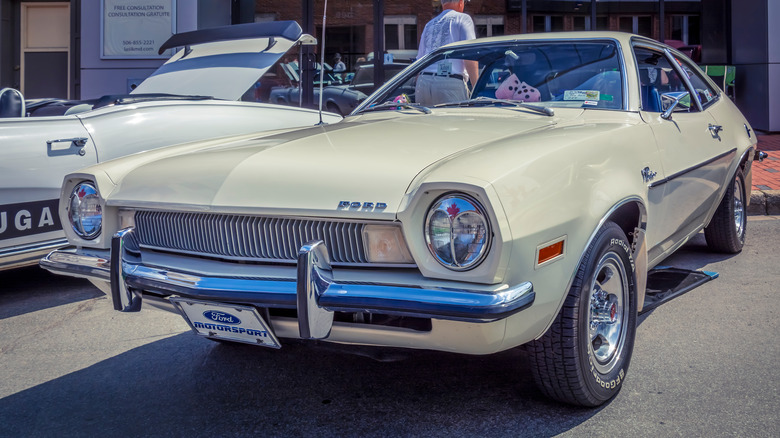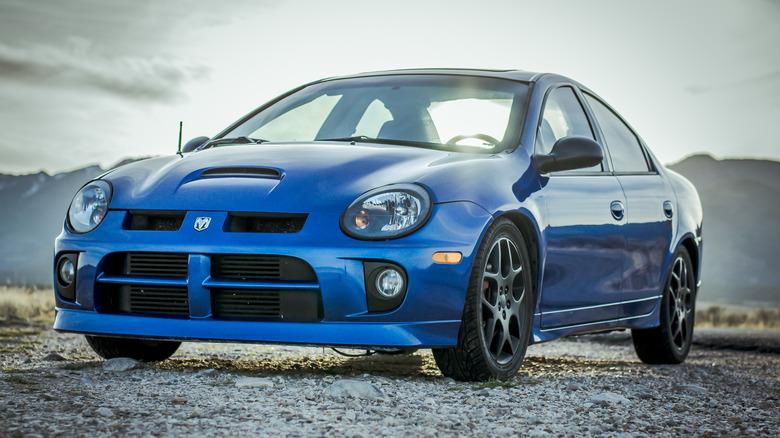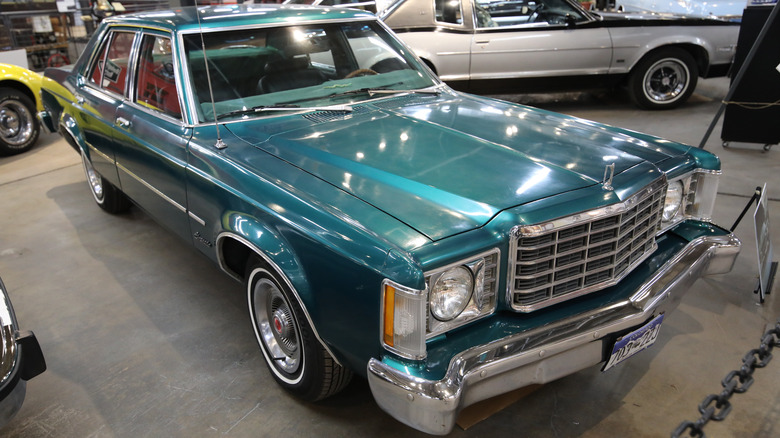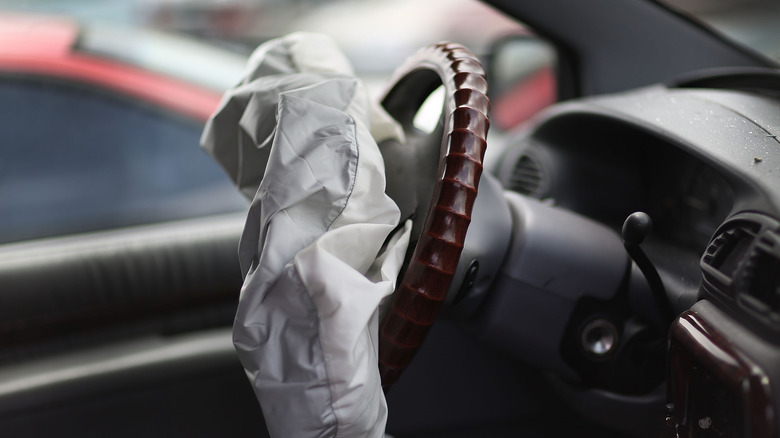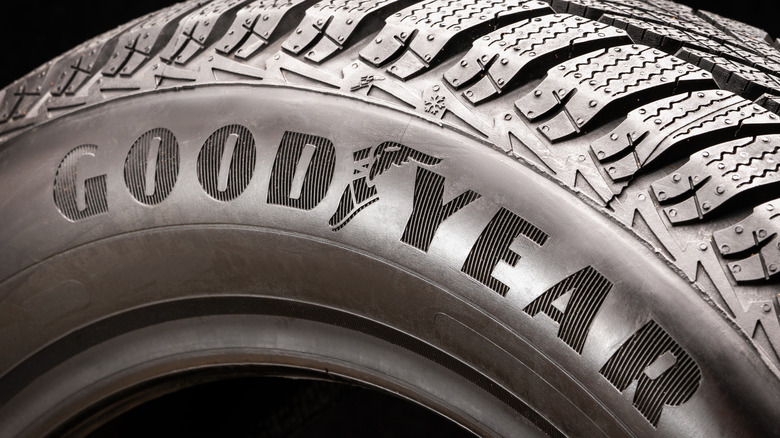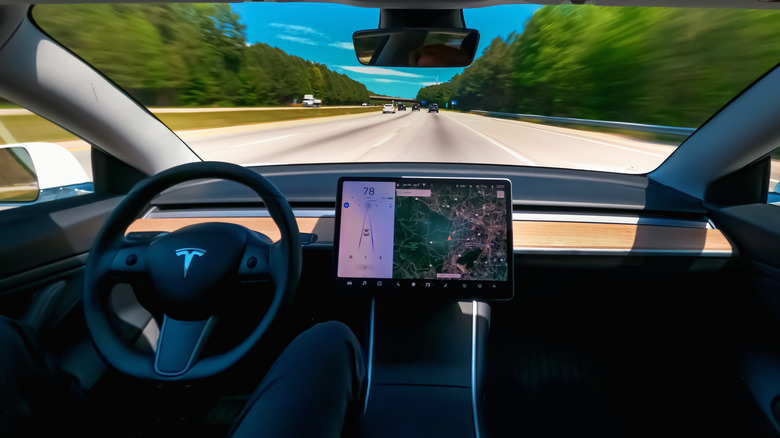The Deadliest Defects In Automotive History
Modern cars are on the whole now safer than ever, with better crash protection and technology that can help drivers stay alert to potential hazards. In 2022, a record 101 vehicles were awarded an IIHS Top Safety Pick or Top Safety Pick Plus award, and yet the number of road deaths reached a 20-year high the same year. So, why are more Americans dying on the roads despite the fact that new cars are getting safer?
Well, there's no simple answer, but part of the reason might be that there are still plenty of older cars on the road that are driving around with potentially deadly safety defects. A spate of wide-reaching recalls has hit the industry over the past few decades, concerning everything from shrapnel-filled airbags to inadequately protected gas tanks that can explode on impact. These recalls have hit tens of millions of cars, costing manufacturers billions in fines and lawsuits. Yet, as they reel from the impact of these scandals on their end-of-year earnings reports, there are hundreds of families left mourning for lost loved ones that were killed directly as a result of these carmakers' negligence. Over the years, there have been dozens of reports of drivers and bystanders being killed by defective automobiles, but these ten faults are among the deadliest in U.S. history.
Ford Bronco II rollovers
Launched in 1983, the Ford Bronco II was the smaller, two-door version of the full-size Bronco, built to compete against the Chevy S10 Blazer and Toyota 4Runner. At first, it received positive reviews from critics and owners, with MotorTrend even suggesting the XLT trim stood for "Xcellent Little Truck." However, evidence soon began to mount of the truck's tendency to roll over, with the rear-wheel drive version being especially prone to instability.
Data from the Insurance Institute for Highway Safety showed the Bronco II's fatality rate between 1986 and 1990 was 3.78 deaths per 10,000 vehicles, more than twice that of any other SUV on the road. The truck was essentially a rolling death trap, and over 260 fatalities were officially attributed to the rollovers. These deaths resulted in dozens of lawsuits, with Ford reportedly paying out over $2.4 billion in total in damages and settlements. Even though the Bronco II was axed in 1990, MotorTrend reports that Ford was still settling lawsuits over the truck as recently as 2012.
Jeep's exploding gas tanks
It's not just Ford that has been caught selling SUVs with deadly defects, as Jeep was forced to issue a recall after it was found that plastic gas tanks in its 1993-2004 Jeep Grand Cherokees and 2002-2007 Liberties could easily rupture. Despite calls from campaigners, CBS News reported that it took until 2010 for the NHTSA to begin investigating the issue. Jeep argued that there was nothing wrong with the vehicles and that the investigation should be dropped, but by 2013, the NHTSA reached the conclusion that the cars carried an "unreasonable risk" of "burn[ing] to death in rear impact crashes."
In response, Jeep agreed to recall the 1.5 million vehicles and fit a tow hitch, which the company claimed would protect the gas tank from rear impacts. Safety experts and former NHTSA officials warned that this wasn't an adequate fix, according to CBS News, but despite concerns, the recall went ahead. However, it wasn't well enforced, and only a small percentage of affected cars ever ended up with the makeshift remedy anyway. Reports of drivers dying in Jeep gas tank fires continued over 18 months after the recall was issued, and it's unclear how many defective Jeeps are still out on the roads today.
GM's faulty ignition switches
Many of the deadliest defects arise from design or manufacturing flaws within overlooked components of the car, like GM's faulty ignition switch. The switch could turn off safety features like airbags and power steering while driving, without the driver realizing it. GM finally issued a recall for the fault in 2014 but was forced to pay a $900 million criminal fine after it was discovered that bosses knew about the problem over a decade before the recall was announced.
Rather than pay up to fix the mistake immediately, executives chose to hide the problem from regulators, in the hope that it simply wouldn't be discovered. The death toll for these defective ignition switches reached 124 people by 2015, with another 275 people seriously injured. GM eventually paid out around $600 million to victims in compensation, with each victim receiving at least $1 million. The recall affected 2.6 million vehicles, and it's thought that the vast majority of these vehicles were brought in for a free replacement switch.
Ford Explorer and its Firestone tires
After the financial and PR disaster that was the Bronco II, it was expected that Ford would have learned from its mistake and built a more stable SUV. It didn't, launching the Explorer despite engineers expressing concerns over its lack of stability when cornering hard. That quickly became the least of its worries, though, when reports started pouring in of the truck's specially designed Firestone Wilderness AT tires failing at high speeds. At first, Ford tried to pin the blame on Firestone, claiming that it "[did] not have enough confidence in the future performance" of the brand's tires.
Firestone responded by pointing out that the same exact tires seemed to work fine on Ford's Ranger pickup, and suggested a design flaw in the Explorer was the reason for the failures. However, further recalls in the following years of other variants of its tires eventually meant that Firestone was forced to shoulder most of the blame. The Explorer recall happened in 2001, but even five years later, a report by the NHTSA found that up to 10% of Explorers still carried defective tires, many as spares. The death toll from the Firestone incident is thought to be "at least" 174 according to Time, with over 700 more serious injuries recorded.
Unintended acceleration in Toyotas
Toyotas might have a reputation as well-built, reliable cars, but some of that reputation was eroded when reports emerged of unintended acceleration in some of the brand's vehicles. Over a 10-year period between May 2000 and 2010, the NHTSA received more than 6,200 complaints involving Toyota and Lexus vehicles accelerating of their own accord, with 89 deaths recorded. Toyota finally issued a recall in 2010 but insisted that the only issue was incorrectly placed floor mats, rather than anything mechanically wrong with the car.
Toyota ended up paying out over $1.1 billion to settle the lawsuits that arose from the recall, including a $17.35 million fine from the NHTSA for being too slow to act after the initial reports were disclosed. For some of the cars involved in the scandal, the company paid to retrofit them with technology designed to stop the car in emergencies, but for cars where that wasn't possible, they simply had to pay out cash to owners. Over 16 million vehicles in total were affected, with 3.2 million of those being retrofitted with the new technology.
Ford Pinto's exploding gas tank
The tale of the Ford Pinto is one that has remained etched into public consciousness, not only because of its deadly defect, but because the entire saga could have been prevented. In an effort to compete with upstart Japanese manufacturers, Ford rushed the development of the Pinto, discovering that there was an issue with the design of the fuel tank late into the process. It was mounted low in the rear of the car, and even a low-speed collision could cause it to rupture, spilling its contents and potentially exploding.
A variety of solutions were proposed by the brand's engineers, but Ford executives decided that it would cost less to simply pay out for the resulting death and injury lawsuits, and so they greenlit the car for production in its original state. When the news got out that the Pinto was essentially a 'four-seater barbecue', the resulting PR fallout and lawsuits caused lasting damage for Ford, dragging its public image through the mud for over a decade after the problems were discovered. However, the fault wasn't quite as deadly as most people would think — it's estimated that between 27 and 180 deaths were caused by gas tank explosions, according to Popular Mechanics. Given that 2.2 million vehicles were sold in total, the car's death rate per vehicle sold wasn't much different from that of its competitors, despite its reputation.
Inadequate crash protection in the Dodge Neon
One of the main reasons manufacturers are initially reluctant to disclose any potential safety issues with their cars is that there's a chance that they'll slip by unnoticed, letting the manufacturer off scot-free. This was the case with the second generation Dodge Neon, which was sold between 2000 and 2005. In a study examining NHTSA data between 2002 and 2005, the car registered 160 deaths, more than any other vehicle. There has been no definitive answer as to why the car was so deadly, but a closer look at the Neon's IIHS report provides some clues.
In the IIHS standard side impact test, the Neon received a "poor" rating in every category, with the report noting that the dummy's head even came into contact with the barrier upon impact. The moderate overlap test also flagged up plenty of safety defects, with the steering wheel snapping off the column on impact and the driver's side airbag failing to properly catch the dummy's head. Despite all of these flaws, the car was left on sale unchanged for five years, with thousands of examples still on American roads today.
Ford transmissions slipping out of park
In 1980, the NHTSA confirmed it had found a defect in Ford vehicles with automatic transmissions made between 1966 and 1977, which could cause them to slip out of park. It revealed at the time that it had received reports of over 6,000 accidents, 1,710 injuries, and 98 fatalities caused by the problem. The victims were primarily younger children or elderly adults, who were unable to move out of the way of the moving car in time.
Ford agreed to fix a sticker to every affected car's dash warning drivers to turn off the ignition before exiting the car, which they claimed would solve the issue. However, it wasn't enough, and a further 77 people were killed after the recall was issued, bringing the overall total to 175 deaths. The Center for Automotive Safety launched a lawsuit in response to Ford's ineffective recall, but it ended years later with no further action taken against the company.
Faulty Takata airbags
Takata was a Japanese company that made parts for a number of leading automakers, including electrical systems, steering wheels and seatbelts. But, its name will forever be tied to the scandal that brought down the firm, which concerned faulty airbag inflators. The metal component inside millions of Takata's airbags was incorrectly manufactured, and as a result, it could explode, sending potentially deadly shards of metal into the car's cabin. A total of 28 deaths were recorded worldwide due to these exploding inflators, with over 400 injuries reported. It's likely that number would have been much higher were it not for the swift actions of global safety regulators as soon as reports of the defect emerged.
Reuters reports that a total of 100 million airbags were affected by the worldwide recall, covering 19 different major automakers. Despite the best efforts of these automakers to contact every affected owner, some vehicles have still not been brought in for repair, and in 2021, a 19th U.S. death was confirmed to be caused by the fault. The exact number of cars still driving around with faulty Takata airbags is not known, but it's likely to be significant, given the unprecedented scope of the original recall.
Goodyear's faulty RV tires
While most of the deadliest automotive defects have been found in cars and trucks, in one case, RVs were found to have a potentially life-threatening flaw. A total of 95 people have been killed so far by Goodyear's defective RV tires, which were recalled in June 2022, 19 years after the last tire was made. The G159 tire was first put under investigation by the NHTSA in 2017 after there were reports of the tire's tread separating out from the body. Campaigners had claimed that the tire was not fit for purpose, as it was originally designed for delivery trucks, and not to travel at highway speeds.
They also accused Goodyear of deliberately covering up the problem, settling cases out of court and requesting that judges seal the documents relating to each case, reports The Independent. It took so long for Goodyear to issue a recall that the tires should have aged out and been already replaced, but there are still thought to be a number of G159s used as spares. Consumer Reports also conducted a study and found a number of vehicles for sale online with G159 tires fitted, which given their age and inherent defects, were almost certainly unsafe to drive.
(Dis)honorable mention: Tesla's Autopilot
While there's been no official recall yet, the NHTSA has confirmed that it is investigating Tesla's Autopilot feature in relation to over 100 crashes, with 16, in particular, being scrutinized for evidence of defects. The agency found that, on average, Autopilot would only hand control of the vehicle back to the driver less than a second before impact, even though the driver would have been able to see the hazards several seconds before a crash occurred. In four of those crashes, Autopilot didn't even alert the driver of any hazards before the accident.
Since 2015, there have been a total of 20 deaths worldwide that were attributed to Autopilot, a small figure considering the number of Teslas sold during that period. However, there have been no other known deaths attributed to publicly sold self-driving technology during this time. It's important to stress that, at the time of writing, no definite defect has been found in Tesla's self-driving feature, which is why it's only included here as a (dis)honorable mention. But, the investigation is ongoing, and if the NHTSA investigation does conclude that Autopilot is unsafe, nearly every Tesla made will potentially have to be recalled. Tesla already had to recall almost half a million EVs in 2021, so Musk and his team will be crossing their fingers that the NHTSA investigation gives Autopilot the all-clear.
